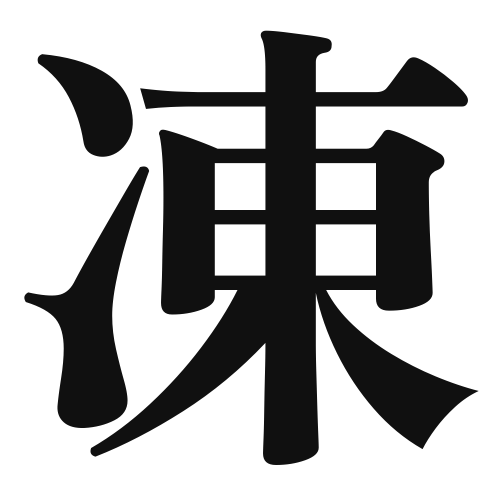1. Overview of Meaning
The kanji “凍” (pronounced “とう” or “kō”) means “to freeze” or “frozen.” It is often used to describe the process of something becoming solid due to low temperatures, such as water turning into ice.
2. Formation and Radical
Formation of the Kanji: The kanji “凍” is a phonetic-ideographic character (形声文字). It combines the radical for “ice” (氷) with a phonetic component that suggests its pronunciation.
Radical: The radical of “凍” is “氷” (ice), which indicates its relation to cold and freezing conditions.
3. Examples of Usage
Common Words and Phrases:
- 凍結 (とうけつ, “freezing” or “frozen state”)
- 凍る (こおる, “to freeze”)
Example Sentences in Daily Conversation:
- 冬になると、湖が凍ります。 (In winter, the lake freezes.)
- この肉は凍っているので、解凍してください。 (This meat is frozen, so please thaw it.)
4. Synonyms and Antonyms
Similar Kanji:
- 冷 (れい, “cold”) – While “凍” specifically refers to freezing, “冷” describes a general state of coldness.
Antonyms:
- 熱 (ねつ, “heat”) – This kanji represents heat or warmth, which is the opposite of freezing.
5. Cultural and Historical Background
Relation to Japanese Culture: The concept of freezing is significant in Japan, especially in relation to winter activities and food preservation. For example, many traditional Japanese dishes utilize frozen ingredients.
Proverbs and Idioms: One common saying is “凍りつくような寒さ” (こおりつくようなさむさ, “a freezing cold”), which describes extremely cold weather.
